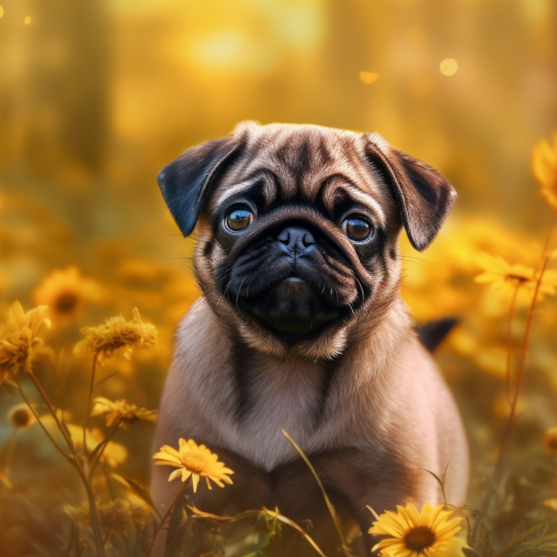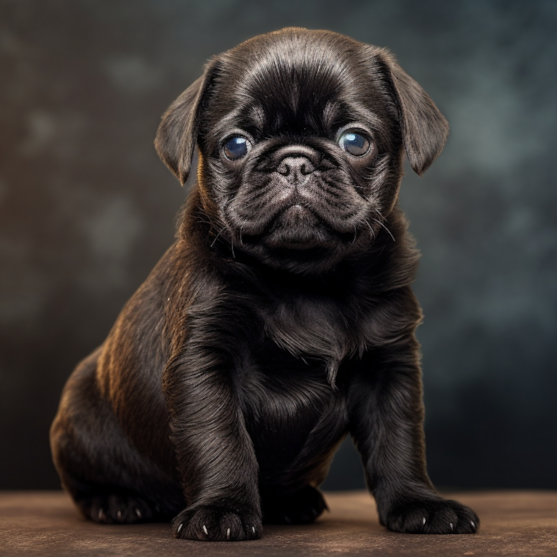Pug Breed Information


The Pug, often referred to as the "little clown", is a breed that's been adored for centuries. With their distinctive wrinkled face, expressive eyes, and compact size, Pugs have a charm that's hard to resist. Originating from China, these dogs were once the prized possessions of emperors and royalty. Today, they've found their way into the homes and hearts of many around the world.
A Pug puppy is a bundle of energy, always curious and ready to explore the world. As they grow into an adult Pug, their playful nature remains, but they also develop a sense of loyalty and affection towards their family. The Pug breed is known for their sociable nature, making them excellent companions for singles, families, and even seniors.
Their moderate energy levels mean they're just as happy lounging on the sofa as they are playing fetch in the park. However, their regular shedding requires consistent grooming to keep their coat in top condition. Despite their small size, Pugs are courageous and often unaware of their petite stature, always ready to protect their loved ones.
Characteristics
- One of the most recognizable features of the Pug is their deep wrinkles, especially on their forehead. These folds give them an expression of wisdom and curiosity
- Pugs have large, round eyes that are full of emotion. Whether they're pleading for a treat or showing affection, their eyes say it all
- With a weight ranging from 14-25 lbs and a height of 10-11 inches, Pugs are sturdy and compact. Their muscular build is complemented by a curled tail that rests on their back
- Despite their small size, Pugs are known for their brave hearts. They're often unaware of their size and won't hesitate to stand up to larger dogs if they feel threatened
- Pugs are incredibly affectionate. They thrive on human interaction and love to be the center of attention. Their loyal nature makes them excellent companions
- A Pug's playful demeanor is infectious. They love to play fetch, chase their tails, and indulge in playful bouts with their human companions
- Whether living in an apartment or a house with a yard, Pugs adapt well to various living conditions. Their moderate energy levels make them suitable for both active families and more laid-back households
- Despite their short coat, Pugs shed regularly. Their double coat requires consistent grooming to keep it looking its best

Appearance
The Pug stands out in the canine world with their unmistakable appearance. This breed's unique features have been celebrated for centuries, making them easily recognizable and adored by many.
One of the Pug's most iconic features is their deep-set wrinkles, especially prominent on the forehead. These folds give the Pug breed a wise and curious expression, often likened to that of a philosopher in deep thought.
The Pug's large, dark, and round eyes are filled with emotion and expressiveness. They have a way of melting hearts and often convey a sense of mischief and playfulness.
Despite being a small breed, the Pug boasts a sturdy and muscular frame. Weighing between 14-25 lbs and standing at a height of 10-11 inches, they have a well-proportioned body that exudes strength.
Pugs have a fine, glossy coat that comes in a variety of colors, including fawn, black, apricot, and silver. While they shed regularly, their coat is easy to maintain with routine grooming.
Another distinctive characteristic of the Pug is their tightly curled tail, which rests over their back. This curl adds to the breed's charm and is a hallmark of their appearance.
The Pug's short, black muzzle, often referred to as a 'button nose', complements their round face. This feature, combined with their wrinkles, gives the Pug their characteristic "pushed-in" face.
Despite their compact size, Pugs move with an elegant and confident gait. Their strides are even and smooth, showcasing their agility and grace.
Pugs have two types of ear shapes – "rose" and "button". While both are charming, the rose-shaped ears are slightly folded, and the button ears stand erect.
The Pug's appearance is a harmonious blend of distinctive features and undeniable charm. Their unique look, combined with their endearing personality, has solidified their place as one of the most beloved breeds in the world.
Temperament
The Pug is often described as a bundle of surprises wrapped in a small package. Their temperament is a delightful mix of humor, affection, and a dash of mischievousness. They are renowned for their deep affection towards their families. Forming strong bonds with their owners, Pugs are always eager to shower them with love and attention. Their loyalty knows no bounds, making them steadfast companions.
A Pug's playful nature is hard to resist. They are always up for a game or a fun activity, often entertaining their families with their comical antics. Their spirited demeanor ensures there's never a dull moment when a Pug dog or Pug puppy is around.
Despite their small size, Pugs possess a brave heart. They are often fearless and won't hesitate to stand their ground when they feel threatened. This courage, combined with their loyalty, makes them excellent watchdogs.
Pugs thrive on social interactions. They get along well with other pets and are especially gentle with children. Their friendly nature makes them popular at dog parks and social gatherings.
One of the standout traits of Pugs is their adaptability. Whether living in a bustling city apartment or a spacious suburban home, Pugs adjust seamlessly to their surroundings. Their moderate energy levels make them suitable for various living conditions.
Pugs have a keen desire to please their owners. This trait, combined with their responsive nature, makes them relatively easy to train, provided the training is consistent and positive.
These pups are incredibly intuitive and can often sense the emotions of their owners. If you're feeling down, your Pug will likely be by your side, offering comfort with their warm presence.
The Pug's temperament is a harmonious blend of love, playfulness, and courage. Their heartwarming nature, combined with their endearing quirks, ensures that they remain one of the most beloved dog breeds worldwide. Whether you're seeking a playful companion or a loyal friend, the Pug promises a lifetime of joy and cherished moments.
Care
Grooming
The Pug, with their distinctive wrinkles and short coat, might seem like a low-maintenance breed at first glance. However, to keep your Pug looking and feeling their best, a consistent grooming routine is essential.
Despite their short coat, Pugs are known to shed regularly. Using a bristle brush or a grooming mitt, brush your Pug at least twice a week to remove loose hair and promote a healthy, shiny coat. This routine not only reduces shedding but also provides a bonding opportunity between you and your Pug puppy.
One of the Pug's most iconic characteristics is their deep-set wrinkles. These folds can trap dirt, moisture, and debris, leading to potential skin issues. It's crucial to clean these wrinkles gently using a damp cloth, ensuring they remain dry and free from any residue.
While Pugs don't require frequent baths, it's advisable to give them a thorough wash every few months or when they get particularly dirty. Use a mild dog shampoo to ensure their skin doesn't get irritated. Remember, over-bathing can strip the natural oils from their coat.
Pugs have folded ears, which can be a breeding ground for bacteria if not cleaned regularly. Use a vet-approved ear cleaner and a cotton ball to gently clean the ears, ensuring they remain free from wax and debris.
Like all breeds, the Pug's nails grow continuously. Regular nail trimming, ideally every 3-4 weeks, ensures they don't get too long, preventing potential injuries. Dental hygiene is vital for the Pug breed. Brushing their teeth regularly using dog-specific toothpaste can prevent tartar buildup and dental diseases. Dental chews and toys can also help in maintaining oral health.
The Pug's large, expressive eyes are prone to dirt and debris. Use a soft, damp cloth to wipe around their eyes gently, ensuring they remain clean and bright. While most of the grooming can be done at home, it's beneficial to take your adult Pug to a professional groomer occasionally. They can provide a thorough cleaning, trim, and even offer tips for maintaining your Pug's appearance.
Exercise Needs
The Pug, with their adorable squished face and playful demeanor, is a breed that's easy to fall in love with. While they might seem content lounging on the couch, it's essential to ensure they get the right amount of exercise to maintain a healthy weight and overall well-being.
Even though Pugs have a moderate energy level, they still benefit from daily walks. A brisk 20 to 30-minute walk around the neighborhood or park can help them burn off energy and explore their surroundings. Remember, the Pug breed can be sensitive to extreme temperatures, so it's best to walk them during cooler parts of the day.
Pugs are known for their playful nature. Engage them in short, fun play sessions using toys or simple games like fetch. These activities not only provide physical exercise but also stimulate their minds.
On days when the weather isn't favorable, indoor activities can keep your Pug entertained. Puzzle toys, treat-dispensing toys, or even a game of hide and seek with their favorite toy can be both fun and mentally stimulating.
Pugs are social creatures. Organizing playdates with other dogs or visiting dog-friendly parks can offer them a chance to socialize and play, benefiting both their mental and physical health.
While Pugs can be determined when it comes to training, short and consistent training sessions can also serve as a form of exercise. Teaching them new tricks or commands keeps them mentally engaged and provides a sense of accomplishment.
Due to their love for food, Pugs can easily gain weight. Regular exercise, combined with a balanced diet, ensures they remain within the recommended weight range of 14-25 lbs for an adult Pug.
Always ensure your Pug has access to fresh water, especially after exercise sessions. Staying hydrated is crucial for their health, especially during warmer months. Pugs have a unique facial structure, which can sometimes lead to breathing difficulties. It's essential to monitor them during exercise and ensure they don't overexert themselves.
While the Pug might seem content being a couch potato, incorporating regular exercise into their routine is vital for their health and happiness. With the right balance of physical activity and rest, your Pug puppy or adult Pug will lead a fulfilled and healthy life.
Health
The Pug, with their distinctive wrinkled face and curled tail, is a breed that's cherished by many. Their charming appearance and playful nature make them a favorite among dog lovers. However, like all breeds, Pugs come with their unique set of health concerns. Being aware of these can help you provide the best care for your Pug puppy or adult Pug.
Due to their short snout, Pugs can sometimes face breathing difficulties. It's essential to ensure they don't overexert themselves, especially in hot weather, and to be aware of any signs of respiratory distress.
The Pug's prominent eyes make them susceptible to various eye issues, including corneal ulcers and dry eye. Regular check-ups with a vet and keeping their face clean can help prevent these problems.
The characteristic wrinkles of a Pug can sometimes harbor moisture and debris, leading to skin infections. Regular cleaning of these folds can prevent such issues. Due to their compact jaw, Pugs can face dental problems. Regular dental check-ups and brushing their teeth can help in maintaining good oral health.
Pugs love their food, which can sometimes lead to obesity. Monitoring their diet and ensuring they get regular exercise can help in maintaining a healthy weight.
Due to their facial structure, Pugs can sometimes face respiratory problems. Ensuring they have a cool environment, especially during hot months, can help in preventing any respiratory distress.
While Pugs are generally healthy dogs, being aware of their specific health concerns can ensure they lead a long, happy, and healthy life. Regular vet check-ups, a balanced diet, and proper care can ensure your Pug remains by your side for many years.
Lifespan
The Pug, with their endearing wrinkles and expressive eyes, is a breed that has captured the hearts of many. These little dogs, known for their playful antics and loving nature, are not just pets but become integral members of the family. Understanding their lifespan and ensuring they lead a healthy life is crucial for every Pug owner.
On average, a Pug's lifespan ranges between 12 to 15 years. However, with proper care, regular check-ups, and a balanced diet, some Pugs have been known to live even longer.
A balanced diet plays a pivotal role in ensuring your Pug puppy or adult Pug remains healthy throughout their life. Providing them with high-quality dog food, rich in essential nutrients, can contribute to their overall well-being. While Pugs are not the most active breed, they still require regular exercise to keep them fit and prevent obesity, which can reduce their lifespan.
Regular visits to the vet can help in early detection of any health issues. Addressing health concerns promptly can ensure your Pug leads a long and healthy life.
Just like humans, genetics play a role in determining the lifespan of a Pug. It's essential to get your Pug from a reputable breeder who conducts health checks on the breeding pairs. Providing a safe and loving environment for your Pug can positively impact their mental and physical health. Avoid exposing them to extreme temperatures and ensure they have a comfortable space to rest.
Regular vaccinations, flea and tick prevention, and dental care can prevent various diseases and health issues, ensuring your Pug remains healthy.
Training
The Pug, with their endearing eyes and infectious enthusiasm, is a breed that naturally gravitates towards human companionship. Their innate desire to please makes the training process a delightful experience filled with moments of joy, laughter, and mutual understanding.
Every Pug has a unique way of communicating. Observe their body language, vocal cues, and behavior patterns. This will help you tailor your training methods to resonate with them. Pugs are intelligent and curious. Use interactive toys and puzzles to stimulate their minds. This not only keeps them engaged but also reinforces the learning process.
Every time your Pug follows a command or exhibits good behavior, celebrate it. Whether it's a gentle pat, a kind word, or their favorite treat, make sure they know they've done well. Take your Pug on mini-adventures. Whether it's a stroll in the park, a visit to a pet-friendly café, or a day at the beach, these experiences enrich their understanding of the world and enhance their adaptability.
Pugs have a playful streak. Occasionally, let them lead the training session. Whether it's a game they love or a trick they want to show off, these moments add a fun twist to the training routine. Organize playdates with other well-behaved dogs. Watching and interacting with their peers can accelerate their learning process.
Maintain a training diary. Documenting their progress, challenges, and breakthrough moments can offer insights and make the journey more structured. Building trust is paramount. Understand that every Pug has its own pace of learning. Be patient, offer encouragement, and celebrate every milestone, no matter how small.
Training a Pug is less about structured commands and more about building a bond of trust, understanding, and mutual respect. It's a journey where both you and your Pug grow, learn, and create memories that last a lifetime.
History
The Pug's journey began in ancient China, where they were revered as royal companions. These dogs were so cherished that they often lived in luxurious accommodations within the imperial palaces. Emperors and members of the Chinese aristocracy held them in high esteem, and they were often guarded by soldiers, a testament to their royal status.
The Pug's fame wasn't limited to China. As trade routes expanded, the breed found its way to Europe, where it quickly gained popularity among the elite. By the Renaissance period, Pugs were gracing the courts of monarchs like Queen Victoria of England and William of Orange in the Netherlands. In fact, legend has it that a Pug named Pompey saved William of Orange from an assassination attempt, further elevating the breed's status.
Over the centuries, the Pug underwent subtle changes in appearance. While the breed retained their signature wrinkles and short muzzle, selective breeding in Europe led to a slightly different look compared to their Asian ancestors. This evolution, however, did not diminish the Pug's charm or their appeal to dog enthusiasts.
Today, the Pug is celebrated not just for their royal lineage but for their calm nature and adaptability. They've transitioned from the laps of emperors to starring roles in movies and commercials. Their endearing expressions and playful antics have made them internet sensations, with many Pugs boasting significant social media followings.
Throughout history, the Pug has been a symbol of love, loyalty, and companionship. Their presence in art, literature, and even fashion underscores their lasting impact on culture and society. From ancient Chinese paintings to modern-day memes, the Pug's influence is undeniable.
The Pug's history is a testament to their enduring appeal. From the opulent palaces of ancient China to the bustling streets of modern cities, the Pug has navigated the sands of time with grace and charm. Their storied past, combined with their lovable nature, ensures that the Pug will remain a favorite for generations to come.
